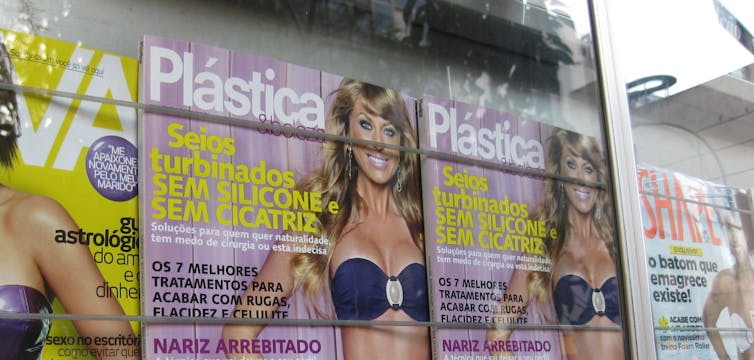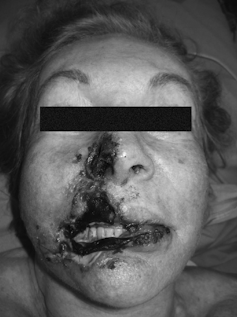In Brazil, patients risk everything for the ‘right to beauty’ – CWEB.com

hollywoodsmile310, CC BY-NC-ND
Alvaro Jarrin, College of the Holy Cross
In the U.S., if you want a face lift or a tummy tuck, it’s generally assumed that you’ll be paying out of pocket. Insurance will tend to cover plastic surgery only when the surgery is deemed “medically necessary” and not merely aesthetic.
In Brazil, however, patients are thought of as having the “right to beauty.” In public hospitals, plastic surgeries are free or low-cost, and the government subsidizes nearly half a million surgeries every year.
As a medical anthropologist, I’ve spent years studying Brazilian plastic surgery. While many patients are incredibly thankful for the opportunity to become beautiful, the “right to beauty” has a darker side to it.
Everyone I interviewed in Brazil admitted that plastic surgeries were risky affairs. In the public hospitals where these plastic surgeries are free or much cheaper than in private clinics, I heard many patients declare that they were “cobaias” (guinea pigs) for the medical residents who would operate on them.
Yet these patients, most of whom were women, also told me that living without beauty in Brazil was to take an even bigger risk. Beauty is perceived as being so central for the job market, so crucial for finding a spouse and so essential for any chances at upward mobility that many can’t say no to these surgeries.
The very long queues for plastic surgery in public hospitals — with wait times of several months or even years — seem to confirm this immense longing for beauty. It’s made Brazil the second-largest consumer of plastic surgery in the world, with 1.2 million surgeries carried out every year.
Brazil’s ‘pope of plastic surgery’
Today, Brazil considers health to be a basic human right and provides free health care to all its citizens — a hard-won victory of social activists after Brazil’s dictatorship fell and a new democratic constitution was written into law in 1988. However, public hospitals remain severely underfunded, and most middle-class and upper-class Brazilians prefer to use private medical services.
In effect, Brazil has a two-tiered system. There is a private health care system that is cutting-edge and luxurious and a public one that is strapped for cash but provides essential services to the working class.

Gregg Newton/Reuters
Plastic surgery is considered an essential service largely due to the efforts of a surgeon named Ivo Pitanguy. In the late 1950s, Pitanguy — now known as the “pope of plastic surgery” — convinced President Juscelino Kubitschek that the “right to beauty” was as basic as any other health need. Pitanguy made the case that ugliness caused so much psychological suffering in Brazil that the medical class could not turn its back on this humanitarian issue.
In 1960, he opened the first institute that offered plastic surgery to the poor, one that doubled as a medical school to train new surgeons. It was so successful that it became the educational model followed by most other plastic surgery residencies around the country. In return for free or low-cost surgeries, working-class patients would help surgeons learn and practice their trade.
Brazil was the perfect testing ground for this idea. In the early 1920s, Brazilian eugenic scientists suggested that beauty was a measure of the nation’s racial progress. Beauty started to assume more cultural clout, and plastic surgeons inherited these ideals, seeing their trade as “fixing” the errors of too much racial mixture in Brazil, particularly among the lower classes.
Beauty’s hidden costs
In my recently published book, “The Biopolitics of Beauty,” I question the idea that humanitarianism is the driving force of plastic surgery in Brazilian public hospitals.
Burn victims and individuals with congenital deformities were once the main beneficiaries of plastic surgery in these hospitals. But at many of the clinics where I carried out my research, nearly 95 percent of all those surgeries have become purely aesthetic. I documented hundreds of instances where surgeons and residents purposely blurred the boundaries between reconstructive and aesthetic procedures to get them approved by the government.
Since most of the surgeries in public hospitals are carried out by medical residents who are still training to be plastic surgeons, they have a vested interest in learning aesthetic procedures — skills that they’ll be able to later market as they open private practices. But they have very little interest in learning the reconstructive procedures that actually improve a bodily function or reduce physical pain.
Additionally, most of Brazil’s surgical innovations are first tested by plastic surgeons in public hospitals, exposing those patients to more risks than wealthier patients. Working-class patients are understood as subjects for inquiry, and I spoke to the small but significant number who were very unhappy with the results of their surgery.
Take one woman I interviewed named Renata. The medical resident who operated on her left her with deformed breasts and uneven nipples. She also developed severe infections that took months to heal and left significant scars. She considered suing the doctor, but discovered she would need a costly expert medical evaluation. She also knew that the Brazilian legal system would likely grant her very little in terms of damages. In the end, she settled for another free surgery, one that she hoped would provide a better result and leave her less unhappy.
This was a typical story among low-income patients that were harmed by plastic surgeons. Their lack of financial resources made it nearly impossible for them to find any justice if anything went wrong, so they assumed all of the risk.

Anderson Castelo Branco de Castro, Author provided
Plastic surgeons, on the other hand, are eager to try new techniques if they seem promising, no matter how risky they might be. A technique known as “bioplastia,” for example, consists of injecting a liquid compound called PMMA into the body in order to permanently reshape a patient’s features. The compound, which is similar to acrylic glass, doesn’t cause problems in most patients. But in a small minority it causes very severe complications, including necrosis of facial tissue. Yet many doctors I interviewed strongly defended the technique, claiming it was a phenomenal tool that allowed them to transform the human body. Risk, they argued, was inherent in any surgical procedure.
Around the world, Brazilian plastic surgeons are known as the best in their field, and they gain global recognition for their daring new techniques. During an international plastic surgery conference in Brazil, an American surgeon I interviewed told me, “Brazilian surgeons are pioneers… You know why? Because [in Brazil] they don’t have the institutional or legal barriers to generate new techniques. They can be creative as they want to be.”
In other words, there are few regulations in place that could protect low-income patients from malpractice.
![]() In a country where appearance is seen as central to one’s very citizenship, patients agree to becoming experimental subjects in exchange for beauty. But it’s often a choice made under duress, and the consequences can be dire.
In a country where appearance is seen as central to one’s very citizenship, patients agree to becoming experimental subjects in exchange for beauty. But it’s often a choice made under duress, and the consequences can be dire.
Alvaro Jarrin, Assistant Professor of Anthropology, College of the Holy Cross
This article was originally published on The Conversation.

